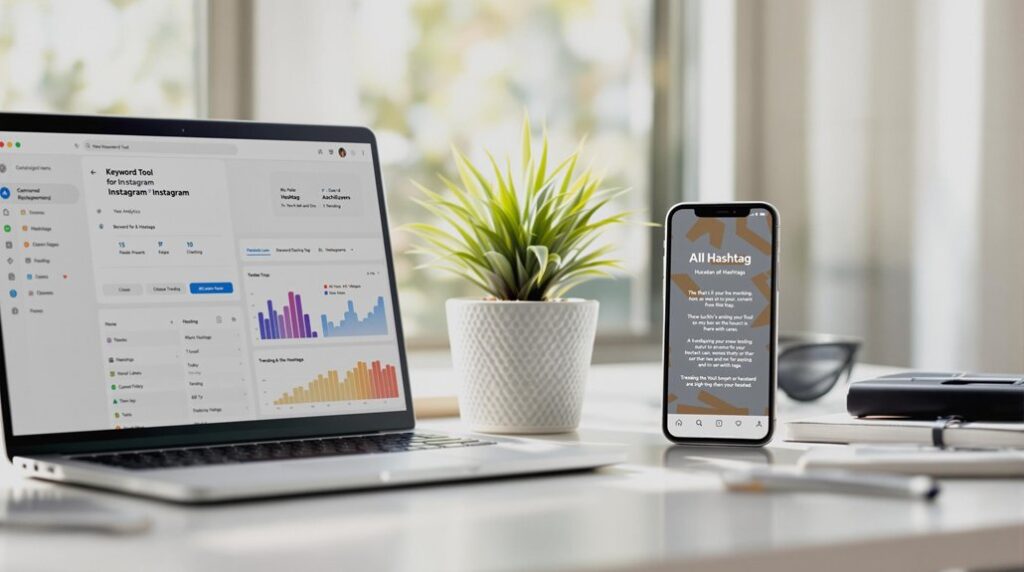Integrating Shopify with Instagram offers a seamless solution to turn followers into customers by simplifying the purchasing journey and increasing engagement. With over two billion users, Instagram provides expansive brand visibility, while shoppable posts create direct sales pathways, boosting conversions. Essential requirements include an Instagram Business account, a connected Facebook page, and compliance with commerce policies. Challenges like account linking and compliance can arise, yet strategic marketing through high-quality visuals and interactive content enhances user engagement and sales performance. Exploring further will uncover advanced strategies and potential challenges in optimizing this powerful e-commerce tool.
Key Takeaways
- Seamless Shopify-Instagram integration boosts sales by simplifying direct purchases within the Instagram app.
- Instagram's vast user base enhances brand visibility, offering opportunities to convert followers into customers.
- Shoppable posts create direct pathways to product pages, increasing customer engagement and conversion rates.
- High-quality visuals and engaging formats like Reels drive higher engagement, influencing consumer buying decisions.
- Effective use of targeted hashtags and ad campaigns increases reach and discoverability, enhancing marketing effectiveness.
Benefits of Integration
The Shopify-Instagram integration offers a strategic advantage for businesses by seamlessly connecting their e-commerce operations with a vast social media audience. This integration enables businesses to link their Shopify store to Instagram, effectively transforming the platform into a powerful Instagram Shopping Sales Channel. By doing so, brands can greatly boost their sales through the burgeoning domain of social commerce, where the user experience is optimized for a seamless shopping experience.
With over 2 billion active users, Instagram provides an unparalleled opportunity to increase brand visibility. Utilizing shoppable posts, businesses can transform ordinary social media interactions into direct pathways to product pages, thereby enhancing customer engagement. The ability to facilitate direct purchases within the app not only simplifies the buying process but also increases the likelihood of converting followers into customers.
Furthermore, the integration offers enhanced analytics, allowing businesses to track performance meticulously. Insights gleaned from user engagement and interests enable online businesses to refine their marketing strategies, targeting audiences more effectively. By employing targeted hashtags, businesses can further increase their reach and discoverability, enhancing the overall effectiveness of their marketing efforts.
Brands leveraging this integration report not only increased sales but also improved customer interaction, underscoring its role in driving considerable growth in the competitive e-commerce landscape.
Integration Requirements
Successfully integrating Shopify with Instagram requires adherence to several important requirements. First and foremost, businesses must possess an active Shopify account along with a registered Instagram Business account. This foundational setup is essential, as it enables the functionality for product tagging and seamless integration between the platforms.
Additionally, a connected Facebook page is necessary, ensuring that the products listed are in compliance with Facebook's stringent Commerce Policies and Community Standards. This means that all products must be carefully curated to exclude prohibited items such as alcohol, tobacco, and adult content.
Furthermore, the integration is geographically restricted, only available in certain eligible countries. Businesses must verify their locations against the supported countries listed in the Meta Help Center to avoid integration issues.
The setup of the Shopify store itself plays an important role in the process. Complete product descriptions and high-quality images are necessary to prepare the catalog effectively for Instagram Shopping features.
Finally, changing personal Instagram accounts to Business Profiles is necessary for accessing sales functionalities.
- Active Shopify account, Instagram Business account, and connected Facebook page are essential.
- Products must comply with Commerce Policies and Community Standards.
- Integration is only available in eligible countries.
Regular catalog maintenance is crucial for reflecting current inventory accurately.
Setup Process
Initiating the integration journey between Shopify and Instagram requires strategic planning and a clear understanding of the setup process. To begin, you must establish a Shopify store and confirm that you have changed to an Instagram Business account. This foundational step is essential as personal accounts are not eligible for shopping functionalities.
The subsequent phase involves connecting your Instagram account to a Facebook page, leveraging Facebook's Commerce Manager for seamless operations.
Once the Facebook Shop is set up, it becomes imperative to integrate Shopify by linking your Facebook and Instagram accounts through the Sales Channels section in the Shopify admin. This step not only consolidates your online store presence but also sets the stage for enabling Instagram Shopping.
However, the approval process by Instagram is pivotal, as it requires compliance with commerce eligibility standards and adherence to Facebook's policies.
Upon successful approval, your account gains the capability to tag products in Instagram posts and stories, a strategic move that facilitates direct sales on Instagram.
This integration effectively streamlines the buyer's journey, transforming Instagram followers into potential customers, and greatly enhances your online store's sales pipeline. Additionally, it's crucial to track engagement metrics such as likes, comments, and shares to measure the effectiveness of the integration and optimize your strategy for better ROI.
Common Issues
Steering the integration of Shopify with Instagram often throws up several common issues that can hinder the seamless connection between these platforms. One prevalent problem is the failure to link the Instagram account, frequently stemming from a lack of administrative rights on the associated Facebook page or an unverified business profile status. This can disrupt the integration process, making it essential to guarantee all administrative prerequisites are met. Moreover, the eligibility requirements set by Instagram's Commerce Policies can impede product visibility on Instagram. Compliance with these policies and proper syncing of inventory with Shopify are critical to overcoming this obstacle. Users may also face delays as accounts undergo a review process, which can extend up to 48 hours, delaying the activation of Instagram Shopping features. It's important to ensure that your Facebook Page template is set to Shopping, as this is necessary for Instagram product tagging approval. Common issues include:
- Product Tagging Challenges: Arise when the product catalog is not correctly connected, necessitating verification of catalog visibility in Facebook's Commerce Manager.
- Account Review Delays: Accounts may require up to 48 hours for approval, impacting integration timelines.
- Customer Service and Troubleshooting Needs: Shopify's customer service is fundamental for resolving persistent integration challenges.
Strategically addressing these issues can enhance the efficacy of the Shopify-Instagram integration, guaranteeing a smoother changeover and improved user experience.
Sales Boost Strategies
To effectively leverage the integration of Shopify with Instagram for boosting sales, a strategic approach is essential. Implementing Instagram Shopping allows brands to seamlessly tag products within posts, streamlining the purchase process and enhancing conversion rates. This Shopify integration transforms Instagram into a powerful sales channel, capitalizing on user engagement. High-quality imagery and innovative formats like Reels and Stories spotlight products, with 75% of consumers influenced by visuals in their purchasing decisions. Engaging through interactive elements like polls and quizzes can further captivate the audience and drive engagement.
| Strategy | Benefit | Outcome |
|---|---|---|
| Product Tagging | Seamless Shopping Experience | Increased Conversion Rates |
| Targeted Ad Campaigns | Reach Key Demographics | Enhanced Brand Awareness |
| User-Generated Content | Builds Trust and Authenticity | Higher Sales Conversions |
| Exclusive Promotions | Incentivize Purchases | Boosted E-commerce Sales |
Targeted ad campaigns on Instagram are crucial in reaching specific demographics, with 71% of consumers more likely to recommend socially engaging brands. User-generated content is another essential strategy, fostering trust and providing social proof, which often results in increased sales conversions. Additionally, exclusive promotions or discounts showcased through Instagram posts and stories incentivize followers to shift into customers. This multi-channel approach, preferred by 73% of shoppers, guarantees that an e-commerce business capitalizes on every opportunity to enhance brand awareness and drive sales.
Frequently Asked Questions
How to Convert Instagram Followers Into Customers?
To convert Instagram followers into customers, employ Instagram strategies like audience engagement and content curation. Leverage influencer collaborations, hashtag optimization, story highlights, and user-generated content. Utilize promotions planning, analytics tracking, and conversion tactics to enhance effectiveness.
How to Integrate Instagram Feed in Shopify?
Integrating Instagram feed into Shopify involves using Shopify Apps and Instagram Widgets for seamless visual branding. This enhances user engagement through social proof, supports content strategy, leverages hashtag utilization, and aligns with e-commerce trends for ideal customer interaction and feed customization.
How Does Instagram Marketing Work?
Instagram marketing leverages advertising strategies, influencer marketing effectiveness, and content creation tips to enhance audience engagement. Employing visual storytelling techniques, hashtag usage best practices, and analytics, it guarantees brand consistency, optimizes campaigns, and maximizes user-generated content impact.
Can You Integrate Shopify With Instagram?
Integrating Shopify with Instagram leverages Instagram Shopping Benefits by enhancing Visual Branding and User Engagement. Shopify Features facilitate seamless Sales Conversion, supported by Social Proof, Content Strategy, Influencer Collaboration, and Analytics Tracking, ultimately enriching Customer Experience and driving growth.
Conclusion
The integration of Shopify with Instagram offers substantial advantages by streamlining the conversion of social media engagement into tangible sales. By meeting integration requirements and following a structured setup process, businesses can maximize the utility of this synergy. Addressing common issues guarantees operational smoothness, while strategic sales boost strategies can amplify revenue potential. This integration represents a pivotal strategy for businesses aiming to harness the power of social media, thereby enhancing customer acquisition and driving sustained growth.




